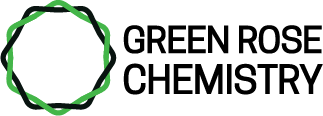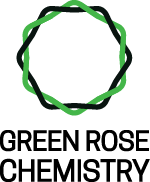Which chemical companies are going green?
Have you ever wanted a simple way to tell which chemical giants are trying to go green, and which aren’t? Now’s your chance. The 2021 ChemScore report cards for 50 major chemical companies have been made free to access, so you can see who’s doing best at reducing the hazards of their products and practices. In order to view most of the reports, you do have to create an account, but this takes about 20 seconds, and you don’t even have to subscribe to the newsletter.

Image from ChemScore website
What is ChemScore?
ChemScore is an initiative from ChemSec that ranks the 50 biggest chemical companies by the sustainability of their product portfolio. It assigns a simple overall letter grade to each company based on four factors:
- Hazardous Product Portfolio
Number of hazardous chemicals a company produces or sells in the EU and US, weighted by company’s total revenue. More details here (https://chemscore.chemsec.org/methodology/hazardous-product-portfolio/). - Development of Safer Chemicals
Strength of the company’s strategy for safer chemical products, from R&D to marketing, including green chemistry considerations. More details here. - Management and Transparency
Transparency around product ingredients, phasing out of specific substances, and engagement with ChemScore. More details here. - Controversies
Track record of accidents, fines, lawsuits, and other environmental/sustainability controversies. More details here (https://chemscore.chemsec.org/methodology/controversies/).
Who makes ChemScore?
ChemSec, short for The International Chemical Secretariat, is an organisation funded largely by the Swedish Chemicals Agency (part of the Swedish government). They advocate for safer, science-based approaches to chemicals in the EU and around the world, including progressive legislation, sustainable corporate chemicals management, and tools to guide companies in safe use of chemicals.
The ChemSec board has close ties to wildlife and nature conservation societies, while their Business Group includes major players such as Apple, Boots, Ikea, and Kingfisher. Perhaps the best-known tool developed by ChemSec is the SIN (Substitute it Now) List, which identifies chemicals of high concern that are likely to be regulated under REACH in the future and is used to assess future chemical liability for socially responsible investment.

Image from ChemSec website
How useful is it?
ChemScore is based on sound science, but like any tool, it performs best when used intelligently. It assigns a single letter grade to the chemical sustainability of massive companies, which is an incredibly challenging task. The simplicity is valuable because it provides an easy way to communicate with investors, policy-makers, and consumers: “Company X gets a D- in sustainability, and that is bad.” The companies themselves are informed about their scores and asked to feed back about specific aspects of the report card in order to raise their grade, engaging them in valuable dialogue about chemical sustainability. There are also specific science-based tools recommended for chemical manufacturers to use, such as GreenScreen and the SIN list.
On the minus side, a simple letter grade cannot possibly encompass all the nuances of this complex issue, so it may be misleading in either the positive or negative direction. Additionally, parts of the methodology are qualitative or may only be visible behind the scenes (e.g. implementing principles of Green Chemistry, definition of a sustainable product, etc.), which could introduce bias or error in the assessment. Finally, there is regional bias, as most of the data is from Europe and the US, so it does not give a complete picture of global chemicals production.
Overall, ChemScore is a thoughtful, impactful tool to spark conversation in the chemical industry about going beyond standard metrics of environmental and safety impacts, and working towards inherently safer chemistry.
Related Initiatives
Cefic Responsible Care
A voluntary initiative run at the EU level by the European Chemical Industry Council (Cefic), which is the trade organisation for European chemical producers. Includes a publicly available framework and a web-tool for self-assessment that is available to Cefic members. This framework focuses on traditional EHS KPIs (employee fatalities/injuries, environmental pollution, resource use, and transport incidents) with no mention of green chemistry or moving towards inherently safer products.
https://cefic.org/our-industry/responsible-care/
Chemical Footprint Project (CFP)
The mission of the CFP is to transform global chemical use by measuring and disclosing data on business progress to safer chemicals. It provides a tool for benchmarking companies as they select safer alternatives and reduce their use of chemicals of high concern. Funded by Clean Production Action, a US-based nonprofit helping advance green chemicals, sustainable materials, and environmentally preferable products across sectors.
https://www.chemicalfootprint.org/
International Sustainable Chemistry Collaborative Centre (ISC3)
The ISC3 aims to shape the transformation of the chemical sector towards sustainable chemistry, running several initiatives to promote research and collaboration across sectors. Collaborative initiative funded by the German Federal for the Environment and the German Federal Environment Agency.
https://www.isc3.org/en/home.html
Green Chemistry and Commerce Council (GC3)
The GC3 is a multi-stakeholder collaborative that drives commercial adoption of green chemistry by catalyzing and guiding action across all industries, sectors and supply chains. US-based organisation funded by contributions from its members.

